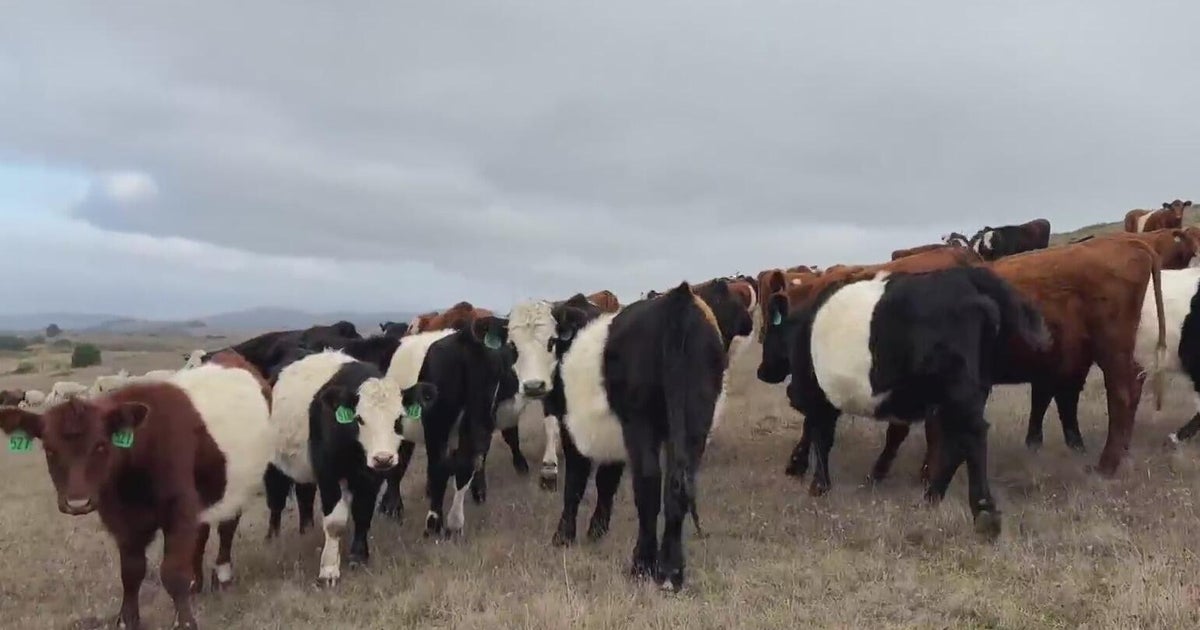From Scarcity to Abundance: Unlocking Solutions to the Food Crisis – Food Tank

Report on Local Entrepreneurship as a Catalyst for Resilient Food Systems and Sustainable Development Goals
Executive Summary
An analysis of two distinct agri-food enterprises—a high-technology vertical farm in Canada and a community-scale fish processing facility in Sierra Leone—reveals that local entrepreneurship is a critical driver for building resilience in global food systems. These case studies demonstrate that appropriately scaled, locally-driven innovations are fundamental to achieving key Sustainable Development Goals (SDGs), including Zero Hunger (SDG 2), Decent Work and Economic Growth (SDG 8), and Responsible Consumption and Production (SDG 12).
Case Study Analysis: Contrasting Models of Agri-Food Innovation
Case Study 1: High-Technology Vertical Farming in British Columbia, Canada
Avery Family Farms represents a capital-intensive model of agri-food innovation aimed at enhancing local food security and sustainability.
- Innovation and Infrastructure (SDG 9): The farm is a multi-million dollar ‘plant factory’ specializing in head lettuce, demonstrating a significant investment in advanced agricultural infrastructure to solve local food supply challenges.
- Responsible Consumption and Production (SDG 12): The facility’s production methods align directly with SDG 12 targets.
- It utilizes minimal land and is highly water-efficient, addressing resource scarcity.
- It operates without pesticides, promoting sustainable agriculture.
- Its reliance on renewable energy sources results in a low carbon footprint, contributing to Climate Action (SDG 13).
- Zero Hunger and Sustainable Communities (SDG 2 & SDG 11): By producing high-quality produce locally, the farm reduces dependence on long-distance, climate-vulnerable supply chains from regions like California, thereby strengthening the resilience of the local community’s food supply.
Case Study 2: Community-Scale Fish Processing in Sierra Leone
A project in Sierra Leone illustrates the importance of context-appropriate solutions for building resilience in developing nations, directly supporting community-level sustainability.
- Decent Work and Economic Growth (SDG 8): A small, locally-managed fish processing facility operates at full capacity, providing consistent employment and economic stability. It enables fishers to preserve their catch, add value, and insure their families against economic shocks.
- Failure of Inappropriate Infrastructure (SDG 9): In contrast, a multimillion-dollar, large-scale facility remains idle due to governance issues and a scale mismatched with the local community’s fishing capacity. This highlights the need for infrastructure that is fit-for-purpose.
- Zero Hunger (SDG 2): The successful humble facility directly combats food insecurity by reducing post-harvest losses and ensuring a stable supply of preserved fish, a vital local protein source. This contributes to building resilience against the impacts of climate change and other systemic shocks.
Conclusion and Strategic Recommendations for Achieving the SDGs
The common thread linking these diverse cases is the vital role of local entrepreneurship in creating resilient and sustainable food systems. To leverage this potential and accelerate progress on the SDGs, the following actions are recommended:
- Foster Entrepreneurial Ecosystems: Support for agri-food entrepreneurs, from start-up incubation to established small businesses, is essential. This includes training the next generation in systems thinking, innovation, and business management to advance SDG 8 and SDG 9.
- De-risk and Incentivize Investment: Public and private sector partnerships (SDG 17) are needed to reduce the financial risks of investing in innovative agri-food ventures, encouraging private capital to flow into sustainable agriculture and food production.
- Promote Locally-Responsive Solutions: Investment must be directed towards enterprises that are responsive to local needs and environmental contexts. Whether high-tech or community-based, successful models improve food security (SDG 2) and build sustainable communities (SDG 11) by being appropriately scaled and managed.
Well-resourced and technologically-enabled local food enterprises are engines for sustainable economic growth and are fundamental to transforming global food systems to meet the 2030 Agenda for Sustainable Development.
1. Which SDGs are addressed or connected to the issues highlighted in the article?
The article discusses issues and solutions related to food systems, innovation, and economic development, which connect to several Sustainable Development Goals (SDGs). The following SDGs are addressed:
- SDG 2: Zero Hunger: The core theme is improving food systems to enhance food security and resilience, directly addressing the goal of ending hunger.
- SDG 8: Decent Work and Economic Growth: The article emphasizes the role of local entrepreneurship, small businesses, and investment in the agri-food sector as drivers of economic growth.
- SDG 9: Industry, Innovation, and Infrastructure: It highlights technological innovation (vertical farms) and appropriate-scale infrastructure (local fish processing facilities) as key to building resilient food systems.
- SDG 11: Sustainable Cities and Communities: The concept of localizing food production, such as the vertical farm in British Columbia, aims to reduce reliance on long-distance supply chains and make communities more self-sufficient and resilient.
- SDG 12: Responsible Consumption and Production: The article describes sustainable production methods, such as the water-efficient, pesticide-free vertical farm with a low carbon footprint.
- SDG 13: Climate Action: The need to build food systems that are resilient to “climate chaos” and the low-carbon footprint of the vertical farm connect directly to climate action.
2. What specific targets under those SDGs can be identified based on the article’s content?
Based on the article’s focus on local, innovative, and resilient food solutions, several specific SDG targets can be identified:
SDG 2: Zero Hunger
- Target 2.1: By 2030, end hunger and ensure access by all people, in particular the poor and people in vulnerable situations, including infants, to safe, nutritious and sufficient food all year round. The article addresses this by discussing how local enterprises, from high-tech farms in Canada to small fish processors in Sierra Leone, can “significantly improve food security for everyone.”
- Target 2.3: By 2030, double the agricultural productivity and incomes of small-scale food producers, in particular women, indigenous peoples, family farmers, pastoralists and fishers. This is reflected in the discussion of supporting small enterprisers, who are key to the agricultural sector, and the example of the small fish processing facility in Sierra Leone that allows local fishers to “preserve their catch and add value to the harvest, insuring their families against shocks.”
- Target 2.4: By 2030, ensure sustainable food production systems and implement resilient agricultural practices that increase productivity and production, that help maintain ecosystems, that strengthen capacity for adaptation to climate change, extreme weather, drought, flooding and other disasters and that progressively improve land and soil quality. The Avery Family Farms’ vertical farm is a direct example of a resilient and sustainable practice, being “extremely water efficient, pesticide free,” and having a “low carbon footprint.”
SDG 8: Decent Work and Economic Growth
- Target 8.2: Achieve higher levels of economic productivity through diversification, technological upgrading and innovation, including through a focus on high-value added and labour-intensive sectors. The article champions this through its praise for “agri-food innovation” and the high-tech vertical farm as a model for the future.
- Target 8.3: Promote development-oriented policies that support productive activities, decent job creation, entrepreneurship, creativity and innovation, and encourage the formalization and growth of micro-, small- and medium-sized enterprises. The article’s central argument is to “nurture agri-food entrepreneurs” and support “small businesses that contribute an upwards of 75 percent of our agricultural GDP” in Canada.
SDG 9: Industry, Innovation, and Infrastructure
- Target 9.2: Promote inclusive and sustainable industrialization and, by 2030, significantly raise industry’s share of employment and gross domestic product, in line with national circumstances, and double its share in least developed countries. The article contrasts two types of infrastructure—the large, idle facility and the small, bustling one in Sierra Leone—making a case for infrastructure that is inclusive and scaled appropriately (“in scale with the community’s needs”).
- Target 9.3: Increase the access of small-scale industrial and other enterprises, in particular in developing countries, to financial services, including affordable credit, and their integration into value chains and markets. The call to “reduce the risk of investing in this sector” and “encourage private capital to invest in agricultural spaces” directly relates to this target.
SDG 11: Sustainable Cities and Communities
- Target 11.a: Support positive economic, social and environmental links between urban, peri-urban and rural areas by strengthening national and regional development planning. The article highlights the problem of British Columbia’s dependency “on greens from water-starved California,” promoting local food production via the vertical farm as a way to strengthen regional food systems and reduce the vulnerabilities of long supply chains.
SDG 12: Responsible Consumption and Production
- Target 12.2: By 2030, achieve the sustainable management and efficient use of natural resources. The description of the vertical farm as using “almost no land,” being “extremely water efficient,” and having a “low carbon footprint” because it uses renewable electricity are all examples of achieving this target.
SDG 13: Climate Action
- Target 13.1: Strengthen resilience and adaptive capacity to climate-related hazards and natural disasters in all countries. The article explicitly states that local entrepreneurship can “build resilience” and that farmers in Sierra Leone are “coping with climate change.” The entire premise is that local food enterprises are a solution to the “climate chaos” affecting global supply chains.
3. Are there any indicators mentioned or implied in the article that can be used to measure progress towards the identified targets?
The article provides several quantitative and qualitative indicators that can be used to measure progress:
Indicators for SDG 2 (Zero Hunger)
- Contribution of small businesses to agricultural GDP: The article states that in Canada, small businesses “contribute an upwards of 75 percent of our agricultural GDP,” which can be used as an indicator for Target 2.3.
- Value addition by small producers: The ability of fishers in Sierra Leone to “preserve their catch and add value to the harvest” is a qualitative indicator of increased income and resilience (Target 2.3).
- Local food availability: The production of head lettuce in British Columbia, where it was previously imported, is an indicator of increased local access to safe and nutritious food (Target 2.1).
Indicators for SDG 8 (Decent Work and Economic Growth)
- Return on Investment (ROI): The forecast that the $30 million vertical farm will “provide a return within 5 or 10 years” is a financial indicator of the viability and productivity of innovative agricultural ventures (Target 8.2).
- Number of local enterprises: The existence and success of “newborn companies” and local entrepreneurs in the agri-food sector is a direct indicator of progress (Target 8.3).
Indicators for SDG 9 (Industry, Innovation, and Infrastructure)
- Level of investment in innovation: The “$30 million” cost to build the vertical farm is an indicator of the capital being invested in high-tech agricultural infrastructure (Target 9.2).
- Facility utilization rate: The contrast between the “idle, mothballed” multimillion-dollar facility and the small facility “at full capacity” serves as a crucial indicator for whether infrastructure is appropriate and sustainable (Target 9.2).
- Flow of private capital: The call to “encourage private capital to invest” implies that the amount of private investment flowing into the agri-food sector is a key indicator of success (Target 9.3).
Indicators for SDG 12 (Responsible Consumption and Production)
- Resource Efficiency: Specific metrics mentioned for the vertical farm, such as using “almost no land” and being “extremely water efficient,” are direct indicators of sustainable resource management (Target 12.2).
- Use of chemicals: The “pesticide free” nature of the produce is an indicator of sustainable production practices (Target 12.2).
- Carbon Footprint: The “low carbon footprint” of the farm is a key environmental performance indicator (Target 12.2).
Indicators for SDG 13 (Climate Action)
- Resilience to shocks: The ability of local food systems to function despite “trade wars, geopolitical upheaval and climate chaos” is a primary indicator of resilience and adaptive capacity (Target 13.1).
4. Create a table with three columns titled ‘SDGs, Targets and Indicators’ to present the findings from analyzing the article.
| SDGs | Targets | Indicators |
|---|---|---|
| SDG 2: Zero Hunger |
2.1: Ensure access to safe, nutritious food. 2.3: Double productivity/incomes of small-scale producers. 2.4: Ensure sustainable and resilient food production. |
– Local production of previously imported foods (e.g., lettuce). – Contribution of small businesses to agricultural GDP (e.g., 75%). – Implementation of resilient practices (e.g., vertical farms, local processing). – Value-added activities by small producers (e.g., preserving fish). |
| SDG 8: Decent Work and Economic Growth |
8.2: Achieve higher economic productivity through innovation. 8.3: Promote policies supporting entrepreneurship and SMEs. |
– Return on investment for innovative projects (e.g., 5-10 years). – Number and growth of local agri-food entrepreneurs and “newborn companies”. |
| SDG 9: Industry, Innovation, and Infrastructure |
9.2: Promote inclusive and sustainable industrialization. 9.3: Increase access of small-scale enterprises to finance. |
– Investment in innovative infrastructure (e.g., $30 million farm). – Utilization rate of facilities (e.g., “at full capacity” vs. “idle”). – Amount of private capital invested in the agri-food sector. |
| SDG 11: Sustainable Cities and Communities | 11.a: Support links between urban, peri-urban and rural areas. | – Reduced dependence on long-distance food supply chains (e.g., not relying on California for greens). |
| SDG 12: Responsible Consumption and Production | 12.2: Achieve sustainable management and efficient use of natural resources. |
– Water efficiency (“extremely water efficient”). – Land use efficiency (“almost no land”). – Elimination of harmful chemicals (“pesticide free”). – Carbon footprint of production (“low carbon footprint”). |
| SDG 13: Climate Action | 13.1: Strengthen resilience to climate-related hazards. |
– Successful operation of local food enterprises despite “climate chaos”. – Adoption of low-carbon agricultural technologies. |
Source: foodtank.com

What is Your Reaction?
 Like
0
Like
0
 Dislike
0
Dislike
0
 Love
0
Love
0
 Funny
0
Funny
0
 Angry
0
Angry
0
 Sad
0
Sad
0
 Wow
0
Wow
0



































































![Significant progress made, but urgent action continues to be needed with 16 million people facing severe levels of acute food insecurity and 1.6 million children acutely malnourished in Bangladesh [EN/BN] – ReliefWeb](https://reliefweb.int/sites/default/files/styles/large/public/previews/31/9e/319ed978-b5f5-4b6d-9b3d-e530da6422ec.png?#)









